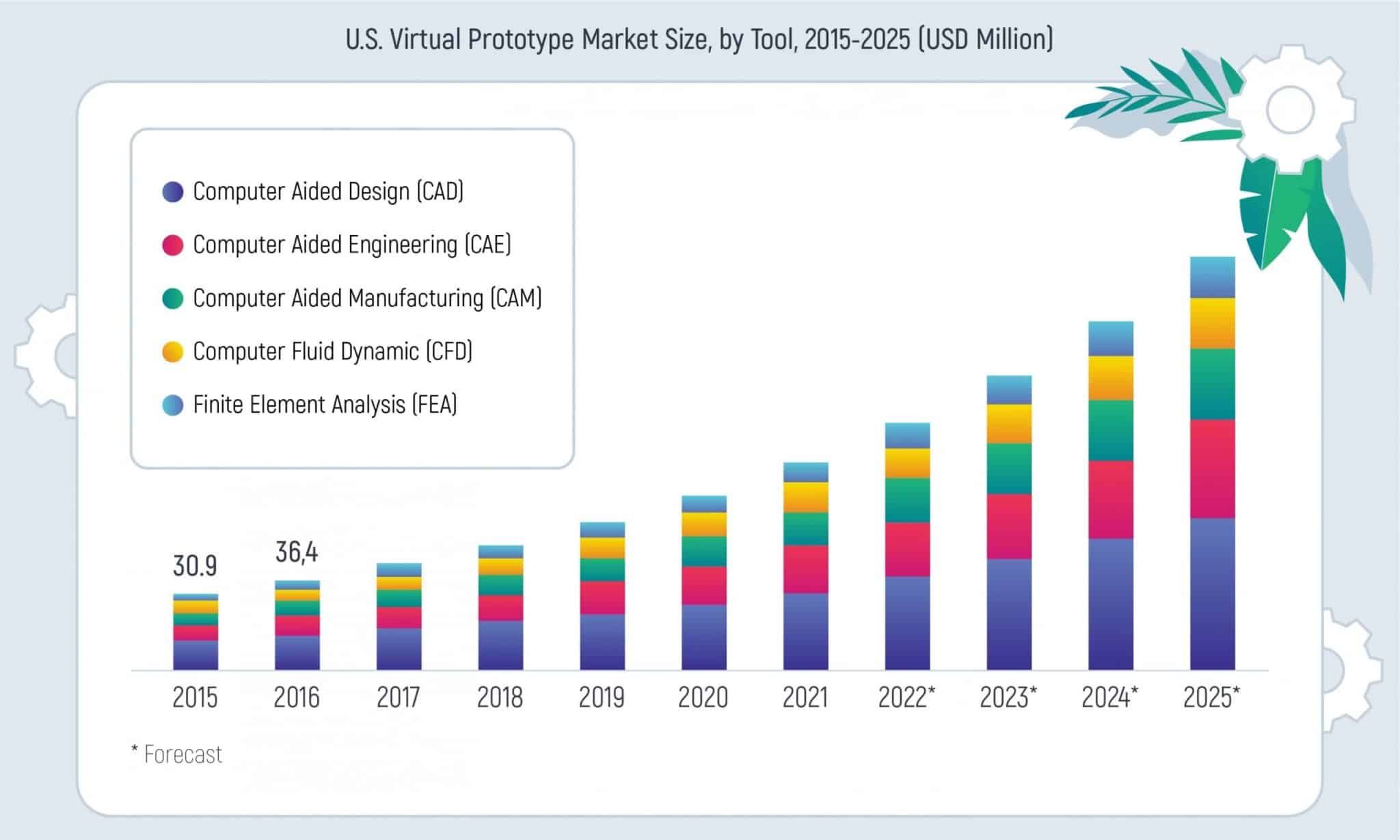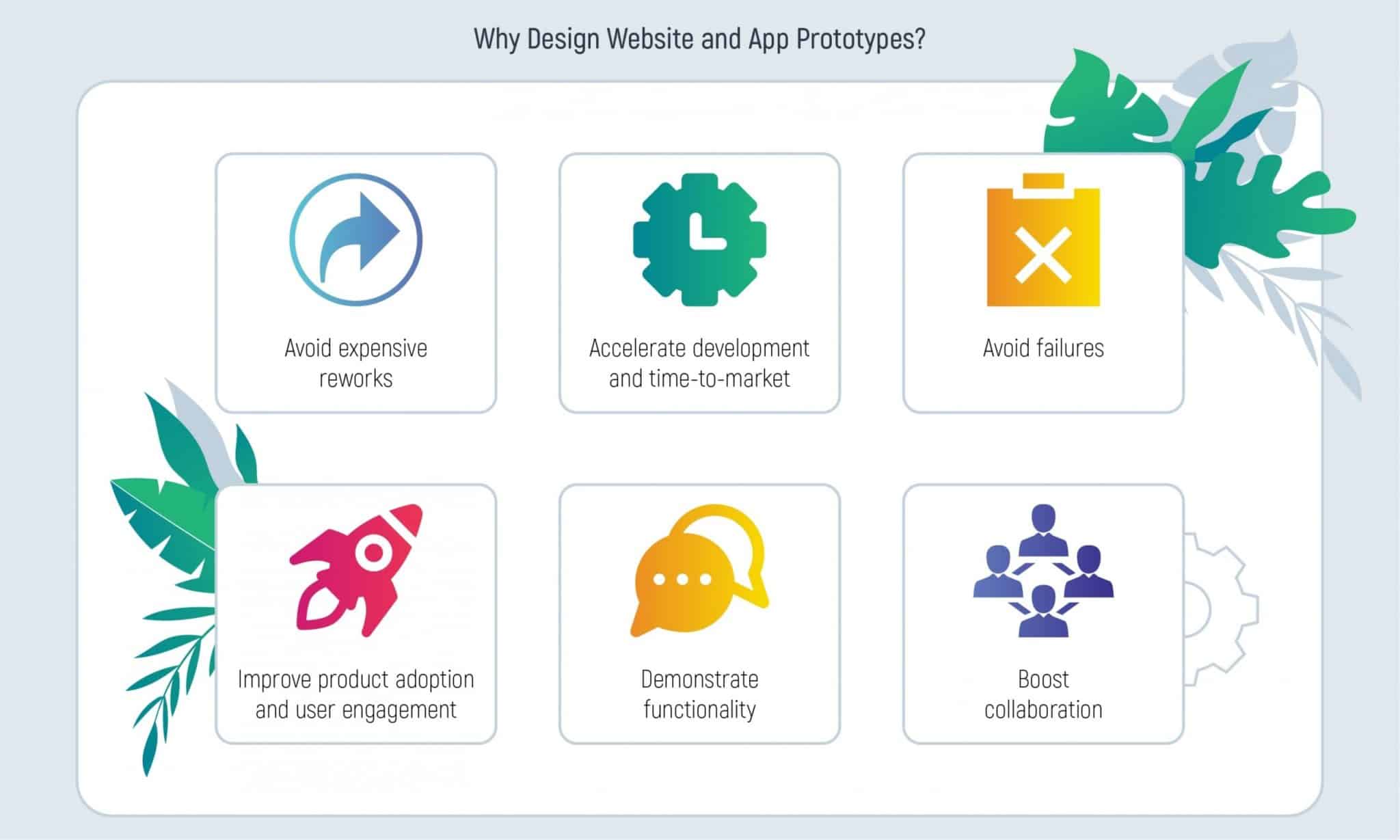When you have an idea, it looks perfect in your head. The main goal is to make your startup product as appealing as you see it in your perspective. A lot of people make the mistake of rushing into releasing a ready product without much pre-thought. That’s why it is essential to create prototype for startup product design.
Put simply, prototype in product design for startups is an early sample or a model of a product that is meant to test a process or a concept. It is usually used if you need to get the idea of your future product appearance and improve it if needed. Creating prototypes for startup product design you turn your idea into reality, basically, it’s a middle ground between a plan and a product.
The tendency shows that prototyping for startup product design gets more and more popular each year. No wonder, as it is always in demand to keep the development of your project under control and improve it on every stage possible. Prototyping for startup product design process gets easier to execute due to modern technologies, which definitely influences the growth of the market.
What is the benefit of building a prototype in product design? Does it really help to get the proper vision of your future project? This guide will tell you everything you need to know about importance of prototype in product design, including how prototype benefits your project and why it is worth your attention if you strive for an immaculate design.
- What is the Product Design Prototype?
- Types of Prototyping
- Low-fidelity prototyping
- High-fidelity prototyping
- Why and When to Build a Prototype
- Why should you build a prototype?
- When should you build a prototype?
- Specific Issues of Product Design for Startups
- How Prototyping Affects Product Design for a Startup?
- Benefits of Prototype for Startup Product Design
- Improved quality
- Reduced risks
- Connection with clients
- Technical preparation
- Prototyping Examples
- Diagrams and sketches
- Storyboards
- 3D printing or rapid models
- Wireframes
- Final Thoughts
- Consider Inoxoft as Trusted Partner for Your Startup Project
What is the Product Design Prototype?
Prototyping involves the development of a new product by presenting a tangible representation of an idea to the target audience. Companies typically create a mock-up or working model to assess the product’s potential in addressing customer needs. The prototype, essentially the product’s mock-up, is subjected to testing with potential customers, which enables designers to evaluate the current design’s feasibility and gain insights into how users perceive the product.
While prototypes are commonly employed during the design phase, companies may also utilize this approach to assess designs at various production stages. For instance, a design engineer might introduce a product prototype to stakeholders before entering the manufacturing stage as a means to pitch their concept. Prototypes can manifest in diverse forms, ranging from storyboards and sketches to rudimentary paper prototypes and wireframes. Regardless of the specific model utilized, its primary purpose is to validate the design of the actual product.
Types of Prototyping
Prototyping comes in two main types, each serving distinct purposes in the product development process:
Low-fidelity prototyping
Low-fidelity prototyping prioritizes the examination and evaluation of functionality over visual aesthetics. Particularly useful in the early stages of design exploration, this approach offers a swift and straightforward means of transforming abstract design concepts into representations of a prospective product. While it facilitates a rapid overview of the product, it does not involve direct user testing.
High-fidelity prototyping
High-fidelity prototyping mirrors the appearance and functionality of the intended product closely. It is employed when the design team has a clear vision of what they intend to construct. This type of prototype delves into the product’s UI, encompassing elements such as aesthetics, visuals, and UX. Additionally, high-fidelity prototypes incorporate interactions, behavior, and user flow, providing a comprehensive simulation of the end product. This level of detail is beneficial for thorough user testing and refining the user experience before final production.
Why and When to Build a Prototype
Building a prototype is a crucial step in the product development process, serving specific purposes at different stages. Here’s why and when to build a prototype:
Why should you build a prototype?
- Gathering feedback. Prototypes provide a tangible representation for stakeholders and users to interact with, allowing for the collection of valuable feedback. This helps identify and address potential issues early in the development process.
- Cost-effective validation. Prototypes offer a cost-effective means of validating design concepts and functionalities. They enable quick testing without the need for full-scale development, saving time and resources.
- Defining user experience. Building a prototype helps define user flows, interactions, and the overall user experience. It serves as a blueprint for the design and development teams, ensuring a clear understanding of how the product will function.
- Facilitating communication. Prototypes act as a visual communication tool, enabling effective collaboration between design, development, and stakeholder teams. They provide a common reference point for discussions and decision-making.
- Risk mitigation. By testing ideas and functionalities in a prototype phase, potential risks and challenges can be identified and addressed early, reducing the likelihood of costly revisions in later stages.
When should you build a prototype?
- Early design exploration. Start building prototypes in the early stages of design exploration to test and refine initial concepts to ensure that the product is on the right track before significant resources are invested.
- User testing and feedback. Develop prototypes when user input and feedback are critical, so designers could understand user expectations, preferences, and potential pain points.
- Before full-scale development. Build prototypes before entering the full-scale development phase. This helps solidify design decisions, making the development process smoother and more efficient.
- Implementing changes. If there are potential changes or updates to functionalities, it’s advisable to build prototypes first: changes are often easier and more cost-effective to implement in the design phase than in the later coding stages.
- Market validation in startups. In startup contexts, use prototypes to assess market demand before committing substantial resources to development. This helps mitigate the risk of building a product that may not meet market needs.
Specific Issues of Product Design for Startups
Building prototypes for startup product design, you must take into consideration different factors. There are also different ways to create startup product design. If you describe your idea to your colleagues or write the main beginning steps down, it’s also a prototyping. This way you establish your idea.
To create successful product design for startups, you should define and analyze the relevant problem. To ease your task, gather opinions and consult your company members. Organize a meeting to give every team member a role in the project. It’s also essential to know users’ opinions on the topic, to know what they are looking for and what design appeals to their eye.
To get the understanding of how your product will perform on the market, it is important to conduct competitor research. This way you will get acquainted with the idea’s strengths and weaknesses. To make a better connection between the product and the user, user journey maps and user/job stories will be helpful. After visualizing your project, you can get to prototyping. It can be just a sketch or an expanded sample of your future product. The final step is to test the product with the team and users.
You should consider if the design is up-to-date, if it is compatible on the market and if your team is capable of executing your ideas. Product design is an important element of your project, as it draws the customers and makes the product much more appealing to the audience. That’s why this step of development requires a deliberate approach.
How Prototyping Affects Product Design for a Startup?
The importance of prototyping for product design is hard to overestimate. You use it when you need to have a clear vision of how your product is going to look. Of course, prototyping is really beneficial for your future project.
First and foremost, prototypes make it easier to understand the design. Illustrating the final result, the design team will have a clear vision of the project. Also you avoid a lot of design mistakes, because you have time to analyze your product. It reduces extra costs and allows you to finish the project in time. One of the most important factors is user testing, as the target audience decides if the product is going to be successful. Contacting with users, the team can make necessary improvements.
Moreover, prototyping helps the team communicate better. Moreover, prototyping is a beneficial feature for future investors. If they notice it, the product has a potential to become more commercially successful.
Is it essential to always use prototypes for startups’ product design? Well, it’s safe to say that this is the best way to get a vision of your future project. Using prototyping reduces the chance of making a mistake and guarantees you success on the market. On top of that, you can get in touch with your target audience and learn more about your future clients’ preferences. These factors are valid enough to use prototyping for your startup product design.
Benefits of Prototype for Startup Product Design
There are many benefits of building a prototype in startup product design. Not only does it positively affect the whole product design, but it also eases your work on many different levels. Here are the main benefits of prototype model:
Improved quality
It gets easier to make your product perfect with prototyping. With the help of it, you can choose the most appropriate design and fix the flaws in it. Later you will have a ready product with no bugs in it.
Reduced risks
Projects without prototyping are more likely to fail than projects that use prototyping. In the latter case, you reduce risks by saving your resources and budget. Also you get the chance to learn more about the market.
Connection with clients
If you choose to use prototyping, you have the chance to get to know your target audience better. Orienting on what interests your future clients, you can present your idea, collect their impressions and opinions and work on your idea.
Technical preparation
Your product may require a lot of up-to-date features. To go for the best design, it’s better to have a vision of your startup’s project beforehand. If some features are difficult to implement, you will have time to solve every issue before releasing your product.
Prototyping Examples
Each method of prototyping plays a crucial role in uncovering insights, refining designs, and ensuring that the final product meets user expectations. Here are some widely used prototyping examples that span various industries and creative disciplines.
Diagrams and sketches
Designers often use hand-drawn diagrams and sketches as a quick and low-fidelity way to communicate and explore ideas. These visual representations can help convey the overall concept and flow of a design.
Storyboards
Storyboards are sequences of illustrations or images displayed in a chronological order to represent the progression of a process or user interaction. They are commonly used in film, animation, and UX design to visualize and plan scenarios.
3D printing or rapid models
In product design and manufacturing, 3D printing is frequently employed to create physical prototypes rapidly. This allows designers to assess the form, fit, and function of a product in the real world before mass production.
Wireframes
Wireframes are skeletal outlines or blueprints that depict the structure and layout of a digital interface, such as a website or app. They focus on content placement and functionality, providing a visual guide for designers and developers.
Final Thoughts
Prototyping is not just a sample of your future project. It helps you visualize your startup idea, calculate all the possible risks and avoid them. Moreover, prototyping gives you time to improve your project and fix all the bugs. It’s also a great chance to communicate with your target audience to know its main requirements.
Inoxoft has a great experience in using prototypes for startups’ product design. The project really benefits from it, as there is enough time to add necessary features, learn the market and reduce the risk of failure. If you are interested in building the best prototype for your startup’s product design, Inoxoft is the best option for you!
Consider Inoxoft as Trusted Partner for Your Startup Project
Inoxoft is an international software development company that delivers top-notch software solutions for clients all around the world. Our company helps you to launch your startup and offers the best services for developing your idea.
With the help of Inoxoft you will be able to build a perfect prototype for your future product design. We will tell you about the importance of proof of concept for software development and you will get excellent ui/ux design services.
Our main purpose is to keep our clients happy with the result they get, that’s why the customers can fully trust us. If you are looking for a reliable partner and are interested in an immaculate design for your startup’s product, contact us!
Frequently Asked Questions
What are the main types of prototype for product design?
The main types of product prototypes are high-fidelity user prototypes, live data prototypes, low-fidelity user prototypes and feasibility prototypes.
What are the benefits of product design for startups?
If you use prototyping, you reduce risks of failure, save time and costs, improve quality of the future product and communicate with your clients.
Is it necessary to use startup product design?
If you want to have the best vision of your future product, prototyping becomes essential. To read more about benefits of prototyping, scroll up!










